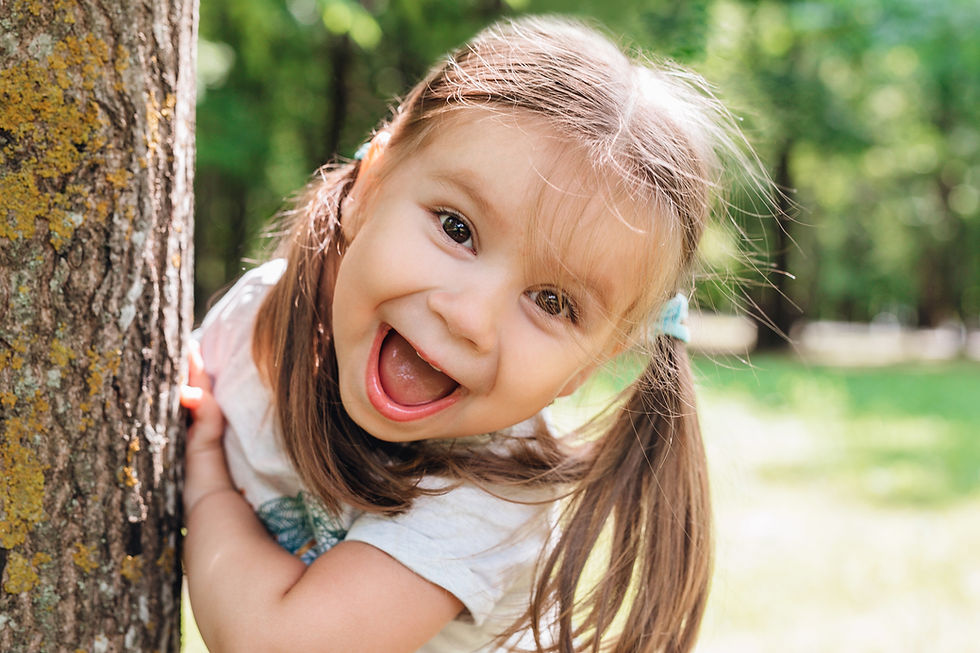Benefits of Outdoor Education
- Jan 4
- 2 min read

1. Enhanced Cognitive Development
Outdoor learning fosters critical thinking, problem-solving, and creativity by encouraging children to explore and interact with their environment. Activities like building structures, observing nature, or navigating trails stimulate intellectual curiosity and cognitive growth.
Source: Louv, R. (2008). Last Child in the Woods: Saving Our Children from Nature-Deficit Disorder. Algonquin Books.
Example: A child building a bridge with fallen branches over a stream learns principles of engineering and balance, while another observing bird behavior may develop an interest in biology and ecology.
2. Improved Physical Health
Regular exposure to outdoor activities promotes physical fitness and strengthens the immune system. Climbing, running, and balancing on natural obstacles improve motor skills, coordination, and overall physical well-being.
Source: Tremblay, M. S., Gray, C., & Babcock, S. (2015). Position Statement on Active Outdoor Play. International Journal of Environmental Research and Public Health, 12(6), 6475-6505.
Example: A group of children racing each other through an obstacle course of logs and rocks builds endurance and improves cardiovascular health. Another child climbing a tree gains strength, coordination, and confidence.
3. Better Emotional Well-Being
Spending time in nature reduces stress, anxiety, and symptoms of depression. Outdoor learning creates opportunities for mindfulness, resilience, and a sense of calm, helping children regulate their emotions.
Source: Wells, N. M., & Evans, G. W. (2003). Nearby Nature: A Buffer of Life Stress among Rural Children. Environment and Behavior, 35(3), 311-330.
Example: A child sitting quietly by a pond, sketching the reflections in the water, finds tranquility and focus. Another child walking through a forest trail experiences a soothing sensory immersion in nature’s sights, sounds, and smells.
4. Enhanced Social Skills
Collaborative outdoor activities promote teamwork, communication, and empathy. Sharing tasks like building shelters or participating in group games teaches children how to work together and solve problems collectively.
Source: Dyment, J. E., & Bell, A. C. (2008). Grounds for Movement: Green School Grounds as Sites for Promoting Physical Activity. Health Education Research, 23(6), 952-962.
Example: A group of children working together to construct a shelter from sticks and leaves learns to share ideas, delegate tasks, and celebrate their achievement as a team. Participating in nature-based group games fosters camaraderie and respect for others.
5. Connection to Nature and Environmental Stewardship
Outdoor learning nurtures a lifelong appreciation for the natural world. By observing ecosystems and engaging in sustainability practices, children develop a sense of responsibility for protecting the environment.
Source: Chawla, L. (2007). Childhood Experiences Associated with Care for the Natural World: A Theoretical Framework for Empirical Results. Children, Youth and Environments, 17(4), 144-170.
Example: A child planting a small garden learns about the life cycle of plants and the importance of pollinators. Another child observing a stream’s ecosystem develops awareness of water conservation and the interconnectedness of life.
Conclusion
Outdoor learning provides numerous benefits for children, enriching their cognitive, physical, emotional, and social development while fostering a deep connection to the environment. Incorporating outdoor activities into daily routines can pave the way for healthier, happier, and more resilient children.

Comments